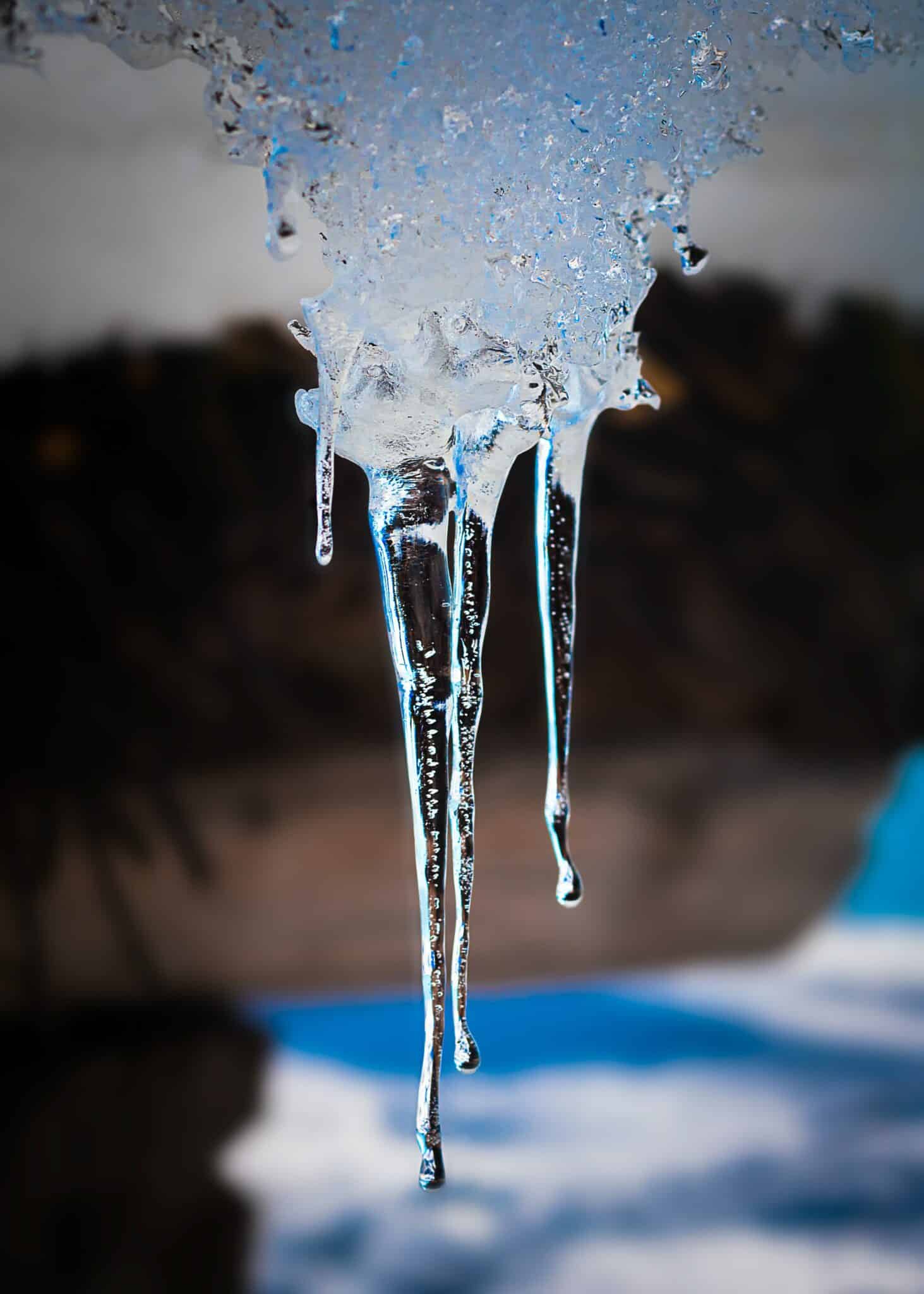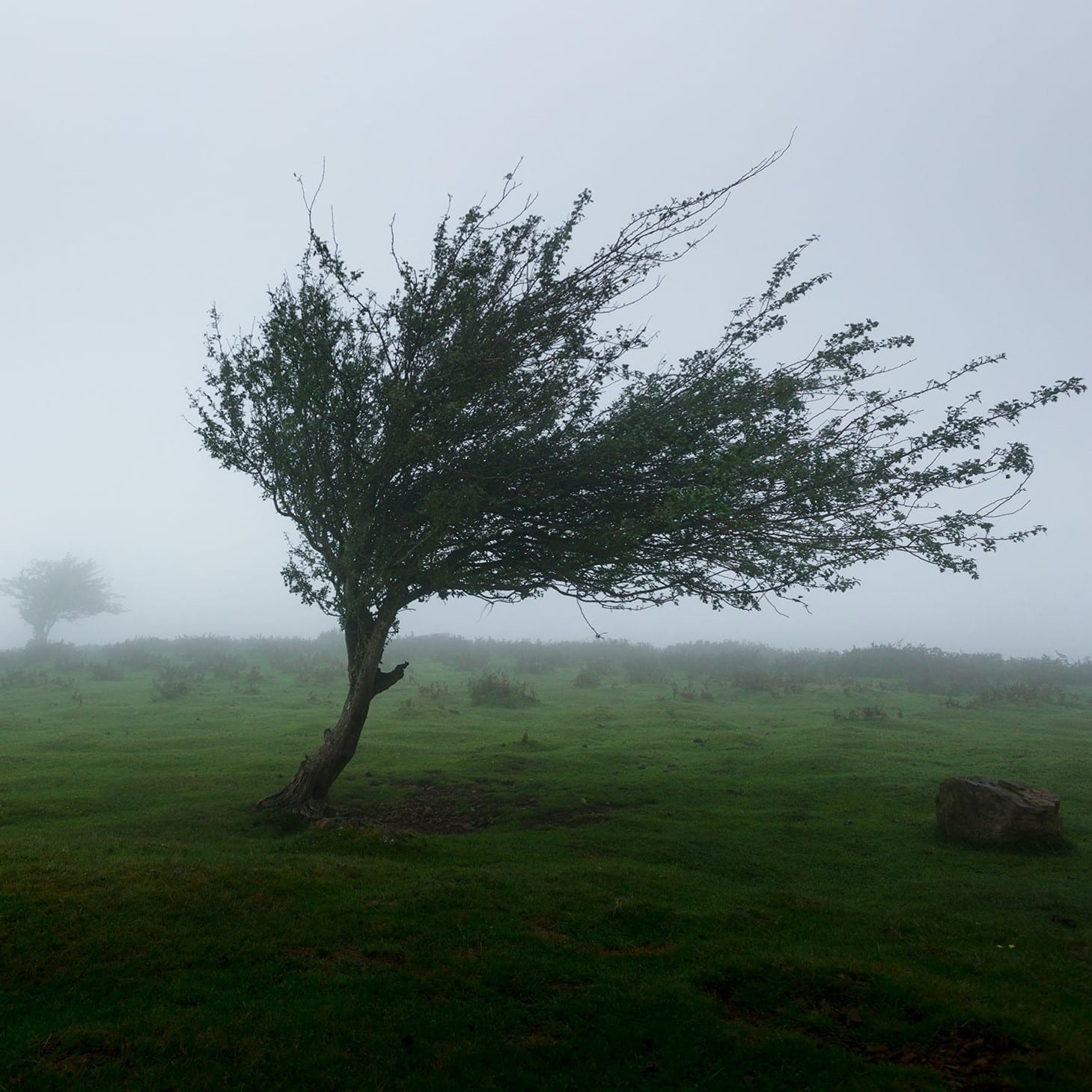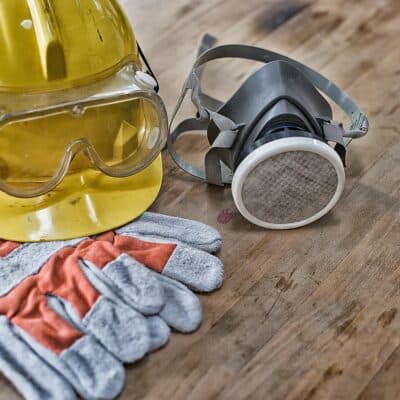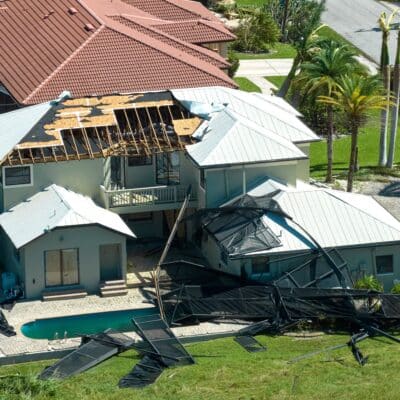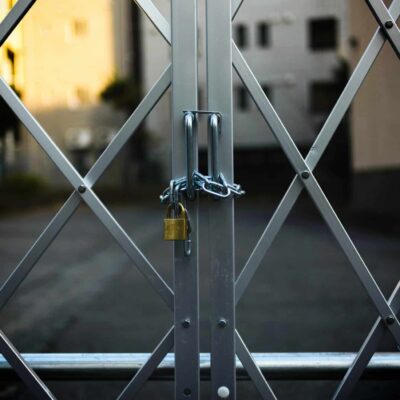Heat Waves and Heavy Rain: Safety Tips for Home Inspections During Extreme Weather
By Alyssa Cink
Last Updated November 9, 2023
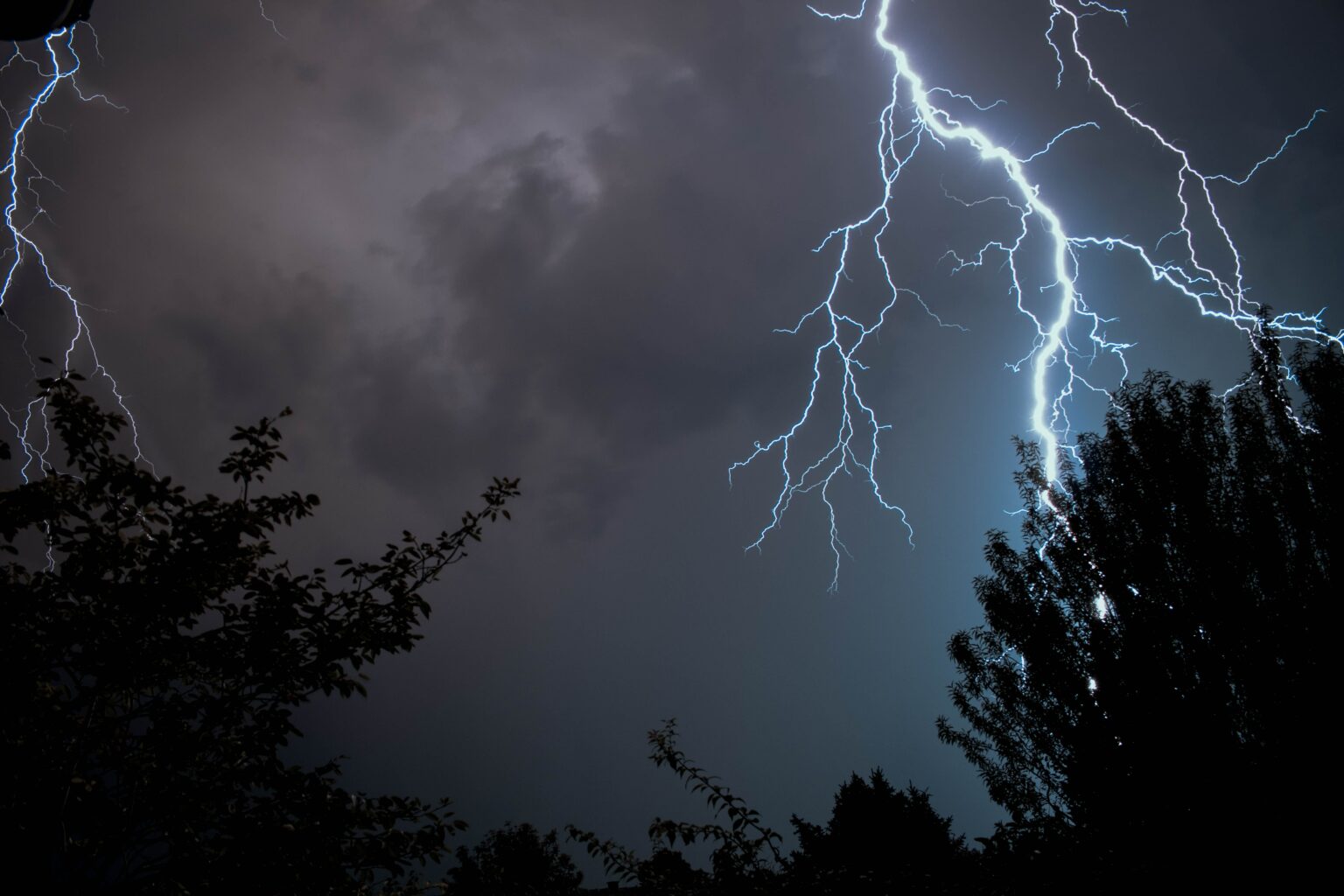
Inclement weather means different things across the United States. If you live in Utah, like much of InspectorPro’s team, a few inches of snow overnight is small potatoes for the average commuter. By comparison, that same snowfall in southern California is a rare sight that might send schools and workplaces into a frenzy.
This makes us wonder: Do home inspectors get snow days? Which weather conditions do home inspectors worry about the most, and why? If taking a rain check isn’t an option, what can you do before and during the inspection to avoid accidents and write a quality report?
We spoke with home inspectors and did our own research to help you weather your region’s storms.
Home Inspections During Extreme Weather: The Advantages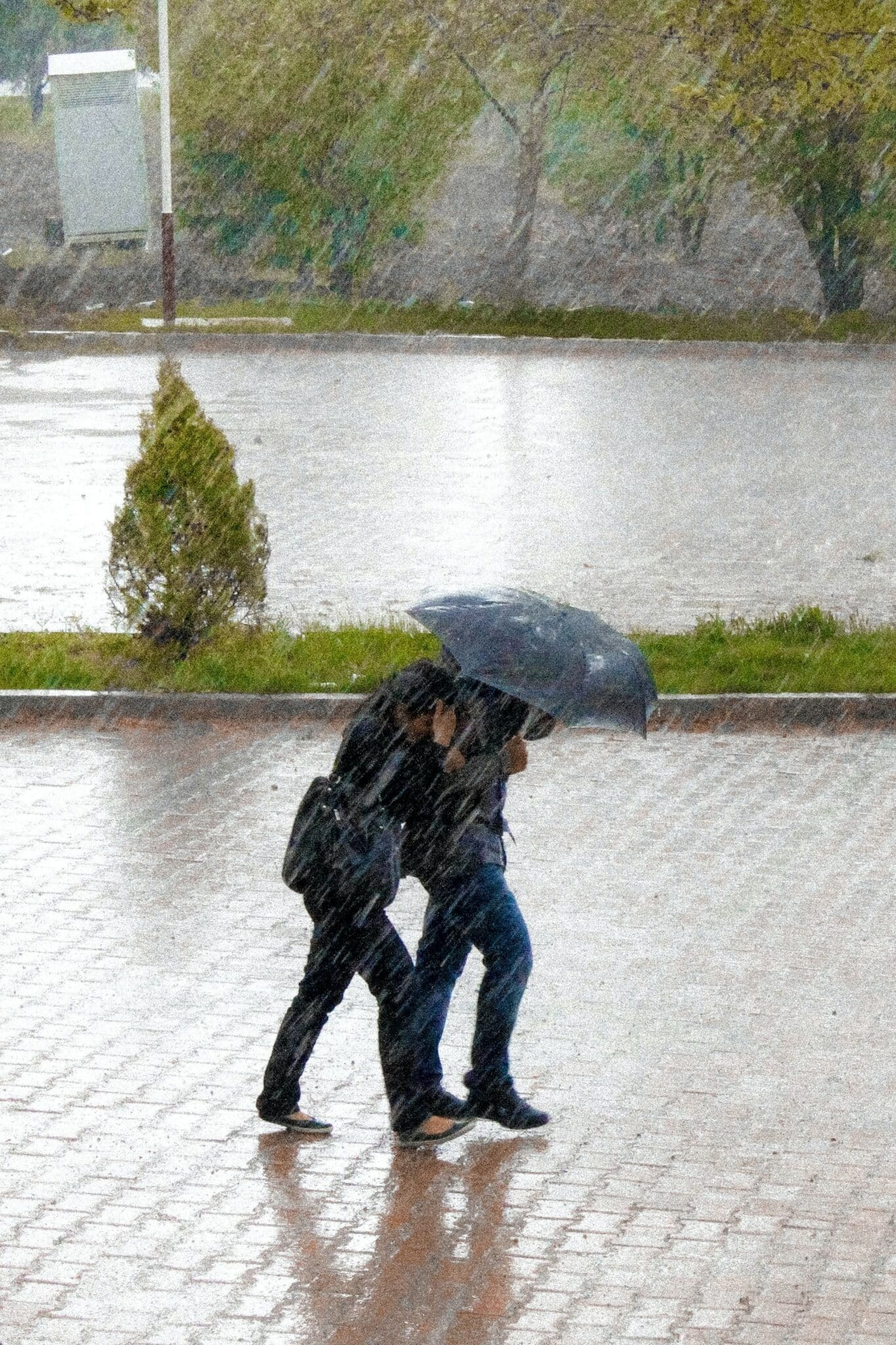
First, it’s worth noting that some “bad” weather, while challenging for a home inspector, isn’t inherently bad for the inspection. On the contrary, you can tell a lot about a house’s integrity when you see it under pressure from the elements. For this reason, some home inspectors embrace and even prefer challenging weather conditions to mild, sunny days.
Take rain, for example. Observing a house during a rainstorm creates ample opportunities to catch leaky roofs, poorly sealed windows, and flooding in action, writes Forever Home Inspection of Oklahoma and Iowa.
Snow and wind, too, paint a clearer picture of a home’s overall safety and comfort. Pristine Inspections & Testing of Illinois explains that frigid temperatures make it easier to observe freezing plumbing, detect drafts and poor insulation, test the heating, and observe how the roof system holds up to the weight of snow and ice. Furthermore, icicles and ice dams on the roof can indicate a host of existing and future problems for the owners. By reporting ice dams, you can advise your client to watch for bad gutter drainage, gutter damages, interior water intrusion (in the roof and drywall, for example), mold, and more.
When conditions turn snowy, windy, rainy, or excessively hot, these kinds of observations can transform a good report into an excellent one. As the saying goes, the hottest fire produces the strongest steel. Meanwhile, without the right experience and precautions, the same inspector who’s forged in one fire may be lost in another.
Let’s consider some of the challenging conditions you might face while performing home inspections in bad weather. Note that we won’t cover all possible storms here, like hurricanes or tornadoes. Every inspector should research seasonal expectations for their unique regions.
The Dangers and Disadvantages
Home Inspections in the Rain
Clients and realtors may ask: “Is it possible to perform a home inspection during a rainstorm? Can you inspect a roof in the rain?” But the answer isn’t always a straight “yes” or “no.”
Not every city gets snow. But every home inspector deals with rain—though how much and how often certainly varies. While Jeff Bissonnette of JDB Property Inspectors LLC does get rain in southern California, it’s more predictable than what inspectors in Florida and Hawaii might face, he said.
“My business partner, he’s in Florida, so he and I talk about [weather] all the time. It’s like, ‘Yep, I was out, it was 85 degrees this morning doing the inspection. By the time I was done, it was pouring rain. I couldn’t see driving home because it was raining so hard,’” Bissonnette relayed.
Rain affects more than just your drive. When you perform a home inspection in the rain, be cautious of a slippery roof. Whether caused by the rain itself or from lingering moss, slick roofs increase your risk of falling.
Crawlspaces can get flooded or muddy as well. While many inspectors don’t mind a little mud, a problem arises when crawlspaces have hanging, exposed wires—i.e., potential electrocution, Bissonnette said. The same goes for inspecting outside electrical panels and even some pool equipment. In any case, electricity and water don’t play well together, he explained.
Not to mention, when rain leaves soft, muddy soil behind, you’ll want to be careful where you place your ladder. A ladder that sinks into the mud might seem stable at first, Bissonnette said. The higher you climb, however, the more your center of gravity changes. Before you know it, your ladder is sliding in the mud, taking you with it.
Windy Home Inspection Conditions
High winds, either alone or paired with rain, pose several risks.
Wind is loud, it throws off your balance, and it lifts debris into the air, thus inhibiting your visibility. Plus, without the obstacles of trees and buildings as a barrier, wind travels faster and stronger the higher up you go. Whether you’re climbing a ladder or walking on a roof, a big gust of wind is a recipe for a bad time, said Jamie Miller of Gold Key Inspection Services, Inc. in Indiana.
“I think wind is the most dangerous. We don’t have [what] you would consider hurricane winds or anything like that here. But today, I think they’re predicting gusts up to 50 miles per hour. And so, if you’re considering getting on a roof in that wind, I just think that’s not a wise thing to do,” Miller said.
Lightning During a Home Inspection
According to the Occupational Safety and Health Administration (OSHA), thunder always includes lightning. Lightening can strike up to 15 miles from its originating storm, even with clear, blue skies overhead.
When you think of lightning during an inspection, do you picture a cartoon-style direct strike? Sadly, that isn’t the only risk you need to worry about.
Metal, one of the safest materials for redirecting and containing lightning strikes, helps prevent fires and danger to people inside the home. All the same, metal is still a conductor. Touching anything metallic increases your risk of electrical shock in a storm. Getting wet decreases your natural resistance even further. Therefore, if you’re soaked from the rain, an electric shock could shift from uncomfortable to deadly, writes Danit Brown in an Indiana Public Media article. Therefore, you don’t want to get caught in any path a conductor creates for lightning, like wires, plumbing, or other metal surfaces.
It happens. In September 2021, two men—ages 60 and 20—were caught in a lightning strike. The younger man suffered serious injuries, and the 60-year-old man was killed. Both were standing on ladders.
Home Inspections in the Snow
In many states across the U.S., home inspections in winter create a perfect storm of cold weather challenges. Along with previously mentioned conditions like rain and wind, you’ll likely need to prepare for snow and ice.
Naturally, home inspections during snow season are a big topic in this industry. Heavy snow makes it difficult to access and see key areas, such as the roof, foundation, a blocked crawlspace, porches, and staircases, Pristine Inspections explains in their aforementioned blog post. On top of that, snow and ice-covered roofs, driveways, sidewalks, and other exterior surfaces can cause slips and falls.
For this reason, inspectors like Jay Brzezinski of General Home Inspection in Ohio say it’s best to avoid walking on freezing roofs unless you absolutely have to. Plus, if you aren’t careful, attempting to place a ladder and walk the roof might dislodge heavy, sharp icicles, which are also loosened with wind and sunshine. Dislodged icicles have been known to shatter car windshields, pull down the gutters, and injuring people walking below.
If that weren’t enough, prolonged exposure to freezing temperatures without proper clothing can lead to hypothermia, frostbite, and wind chill. Learn about the signs and symptoms in R.J. Home Inspections’ excellent blog article.
Heat and Home Inspections
Exposure to temperature extremes doesn’t stop being dangerous once winter’s over. Summertime introduces a different, albeit parallel beast for home inspections in bad weather: the beast of overheating.
Without precautions, hot temperatures can also make home inspectors sick. In our attic safety article, we relayed the tragic story of an inspector who suffered a fatal heat stroke because he didn’t recognize the signs of heat exhaustion.
In addition to heat stroke, summer temperatures sometimes lead to rashes, exhaustion, and cramps from overheating. It can catch you by surprise. After all, heat naturally rises to the attic. If it’s 70 degrees outside, you can expect to face temperatures 10-20 degrees warmer in the attic. And that’s if the attic is properly ventilated. Without the right ventilation, temps usually get much, much more scalding, as Bissonnette experienced.
“I inspected the house up in the mountains. Mind you, it was 7,000-plus elevation. By the time I was in the attic, it was about 12 o’clock. It was only 70, 72 [degrees] outside. It was a nice day for the mountains. But 72 is warm at 7,000 elevation. The attic was about 145 degrees,” Bissonnette said.
Depending on the foundation, inspectors may face similar conditions in crawlspaces, too, writes Nicole of Divinity Inspection Service. Not to mention, a dark, humid crawlspace or attic is extra welcoming to snakes in the summer. Read more about snake safety for home inspectors here.
Make a Game plan for Bad Weather
The key to weather safety is having a game plan before you need it. After all, depending on the season, inclement weather isn’t always predictable. It helps to plan for the unexpected so you’re never caught off-guard.
Keep these tips in mind for those days when it never rains but it pours.
1. As OSHA and the National Oceanic and Atmospheric Administration (NOAA) say, “When thunder roars, go indoors!”
You’re likely already aware that lightning is an occupational hazard. But how many of us confidently know the signs and when it’s time to act?
In their lightning guide, OSHA suggests:
- Look for darkening storm clouds and faster wind speeds. You might also feel an oncoming strike if your hair stands on end or you hear crackling.
- If you hear thunder, seek shelter. Lightning will likely follow.
- Wait in your shelter for 30 minutes after the last thunderclap.
- If your shelter is a vehicle, opt for something hard-shelled. Convertibles are not as safe against lightning strikes.
- If you can’t get inside, avoid the tallest objects around you, like isolated utility poles and rooftops. Additionally, you’ll want to stay away from open areas, water, and fencing, according to OSHA’s lightning guide linked above.
- Once inside, don’t touch concrete walls or floors, plumbing fixtures, electronics, or cords. Remember, if it’s plugged into the wall, don’t touch it at all.
Furthermore, the Laborers’ Health and Safety Fund of North America (LHSFNA) advises workers to:
- Monitor weather conditions (though we understand this one might seem obvious!).
- Look for possible shelter around you so you always know where to run.
- If you’re stuck outside in a lightning storm, get off the ladder or roof immediately. Also, remove metal objects from your person, like tool belts.
- If all else fails, crouch down, cover your ears, duck your head, and touch your feet together.
2. Hold regular trainings.
If you run a multi-inspector firm, you’re responsible for training employees for emergencies, including home inspections during extreme weather and natural disasters. Miller’s company, for example, holds biannual training sessions.
“We have safety training twice a year. And we have protocols written up …that [employees] have to read and sign every six months [that cover] everything from how to set up your ladder and secure it to safety measures in an attic or a crawlspace. … We review and talk about [the protocols] and then decide if we need any other PPE,” he said.
Discuss and write down your team’s action plan for earthquakes, heat waves, winter freezes, lightning storms, hurricanes, and other predicaments your area might throw at you. Additionally, teach employees to recognize common symptoms of excessive heat and cold exposure, and how to take protective measures with a heat index, like before the attic inspection. We include OSHA resources in our attic safety article, but you can find additional materials on OSHA’s heat illness page.
As Miller said, personal protective equipment (PPE) is worth reviewing, too. You and your inspector-employees should know when and how to use their PPE, why it matters, and how to maintain it. If your employees push back, remind them: Safety during the inspection always trumps convenience.
3. Supply your team.
Whether you work independently or manage employees, equip every inspector with resources like water. Store extra water in your work vehicle for emergencies, like if you need to cool down from the heat. Furthermore, create first aid kits for both hot and cold weather. For example, if you get stranded on the freeway while driving to an inspection, you never know when some extra warmth or coolness could prevent illness—or even save a life.
4. Wear the right clothes.
Speaking of PPE, be sure to dress appropriately for the weather. This includes protective clothing or gear for less favorable conditions, like mud in the crawlspace after a downpour.
“Do I like to [get muddy] and then have to drive home? No,” Bissonnette said. “[That’s why I] wear a crawl suit.”
Depending on how deep the snow gets, some inspectors use knee-high gaiters to keep their pants dry, or even snowshoes to make the journey less exhausting, as one American Society of Home Inspectors (ASHI) forum thread shows. Miller said he’s known inspectors who use umbrella hats in the rain, both to improve their visibility and protect their phones. For his own inspections, Miller says waterproof phone cases work just fine.
In addition to crawl suits, you might opt for cooler uniform options in the summer, and warmer, thicker options for home inspections in the winter. Find detailed tips in this article from REI’s expert advice blog.
5. Switch your order.
If you prefer not to reschedule inspections, or you simply can’t, consider following Miller and Bissonnette’s advice and change your order.
“If we get to a house and there’s a downpour going on, really heavy rain and our normal order of operation is to start on the outside of the property, then we may flip the script and go inside, do the interior parts, and then hope that it is done raining or at least a light drizzle and finish up the outside,” Miller said.
Or the opposite: If you expect heavy rain, but it isn’t raining when you arrive, inspect the outside first. You might have time to wrap up the exterior before the rain starts falling, Bissonnette said.
6. Don’t rush.
Whether you’re traversing an overheated attic, or traipsing through waist-high snow, you might be tempted to finish the inspection as quickly as possible. Ignore that instinct. Rushing not only increases your chances of slipping, falling, or missing something; it can also dehydrate you faster.
If anything, slow down and pause a few breaths if the heat, cold, or rain gives you trouble. Use the time to assess how you’re feeling so you can finish the job safely. In fact, if you feel nervous about conditions in an attic, for example, you might implement a policy like Miller’s: Checking in through text messages.
“If you’re going to get in an attic that’s 90 degrees or hotter, the inspector sends a text to the office when they get in. Then they send a text to the office when they get out, just to let the office know that they’re okay and they did not have heat stroke or anything,” Miller explained. “And so, if we don’t hear from them after five minutes, then the office calls to make sure they’re okay.”
Steps like this add some time, of course. But with home inspections in bad weather, a slower pace can have a big impact on your safety.
7. Watch where you put your ladder.
When navigating rain (or even hours after the rain), check for mud and ice while finding a spot for your ladder. Even if you don’t get hurt from a falling ladder, it could damage yours or someone else’s property. In any case, Bissonnette suggests avoiding mud with a ladder altogether.
“I don’t put my ladder in mud,” Bissonnette said. “Maybe you’re not going to risk your safety. But you’re going to risk damage to their property. You could start climbing the ladder, you realize it’s going over, you jump off and then it falls and lands on the Mercedes.”
Also, with the right setup, your ladder can catch you if you find yourself falling. Bissonnette says he prefers to strap his ladder to the eave whenever possible. Then, as he walks, he keeps his ladder’s location in the back of his mind. That way, if a gust of wind knocks him off balance, he can try to tuck and roll toward the ladder and grab on. It ensures he always has an out. Worst case scenario, it would at least slow his momentum.
“[The ladder’s], what, 12 inches wide? So you have a little more ability to hang onto something if you can get your arm through the rung,” Bissonnette explained. “You might go flying around the ladder and fall down. But at least you’re hanging there and, hopefully, you got the strength to get yourself back onto the ladder.”
We offer more roof safety and risk management advice here, including alternative technology to consider if you can’t walk on the roof yourself.
8. Know your limits.
“If you got to look at something and go, ‘I don’t know if that’s safe or not,’ you just answered your question,” Bissonnette explained.
When your inspection conditions become more challenging, you’ll want to know what you can handle confidently. This confidence comes with experience. You need to learn your comfort zone and decide for yourself if you have the skillset to handle various risks. Otherwise, if you try to impress a client by doing something you aren’t equipped to do, you can get yourself into trouble.
“There’s always going to be some degree of risk in whatever you do. But don’t do something stupid just to try to impress your client,” Miller said. “I did that one time to get into a crawlspace and then I could not get out and I had to be pulled out by a couple of people. So, you don’t want to do things that would endanger your health needlessly. As long as you show you’re working hard and you’re doing your best and you try to find a solution for [clients], I think they’re going to be understanding.”
9. Communicate with realtors and clients.
Lastly, while it isn’t so much a safety concern as it is a customer service one, be cognizant of how you talk to clients, realtors, and current residents when the weather limits your access.
For example, imagine it’s pouring rain and you know the weather will limit your scope. You want to reschedule, but you worry the client or realtor will think you’re lazy. Be honest with the client and frame it in a positive light. Bissonnette says clients and realtors will usually appreciate the candor. They might even be on the same page.
“I tell them: ‘I don’t care about getting wet. But I want to give you the best possible [service], and I don’t believe I will be able to because I may not be able to see everything on the roof or get up there,’” Bissonnette explained. “Nine out of 10 times, they appreciate that and they’re willing to work with you.”
If you need to reschedule, give the client or realtor days or times to choose from. Research shows that giving people options also gives them a sense of control. This, in turn, makes them more agreeable. Similarly, if something is inaccessible due to the weather, either offer to return when the weather clears, or recommend follow-up from a specialist.
Finally, include a written disclaimer in your report about any systems or components you couldn’t inspect. Reference your standards of practice (SOP), and document (in writing and with photos) the conditions that barred you from safely and thoroughly evaluating it. Because your report is a snapshot in time, remind clients that the home’s conditions might look different as the weather changes.
“If the roof would be snow-covered, we put a comment right in the report that just says: ‘We cannot evaluate the roof. Please call us when the snow melts, and we would be happy to reinspect it for no additional fee,’” Miller said.
If the worst should happen with home inspections in bad weather, have the right coverage for your accident.
Sometimes, despite all your best efforts, accidents still happen. You get hurt. Your employee gets hurt. You crash your drone on a windy day. The owner accuses you of damaging their property. Your client accuses you of missing an obvious defect. Whatever you’re up against, having the right coverage can get you through the eye of the storm with confidence.
Workers’ compensation, for example, has your back if you or an employee gets sick or injured as a result of your job. It covers medical bills for inspectors hospitalized with heat stroke. It provides wages and physical therapy for the inspector who broke her arm slipping on an icy roof. It’ll even cover funeral costs and lost income to the inspector’s family if a work accident becomes fatal.
What if a seller accuses you of harming them or damaging their property while inspecting in a windstorm, like if your ladder shatters their car windshield? You’ll need general liability (GL) coverage. If you break your own equipment, you would use equipment coverage. Alternatively, E&O coverage handles accusations of errors and omissions—like a foundation crack you couldn’t see due to waist-high snow. Read our E&O and GL comparison article for more examples.
At InspectorPro, we’re your one-stop-shop for stressful accidents or claims a home inspector may face. To get a quote for or ask questions about any of the insurance options we’ve mentioned, fill out a contact form here. We’ll get you in touch with a real, live team member during our working hours. We’re happy to help however we can!


